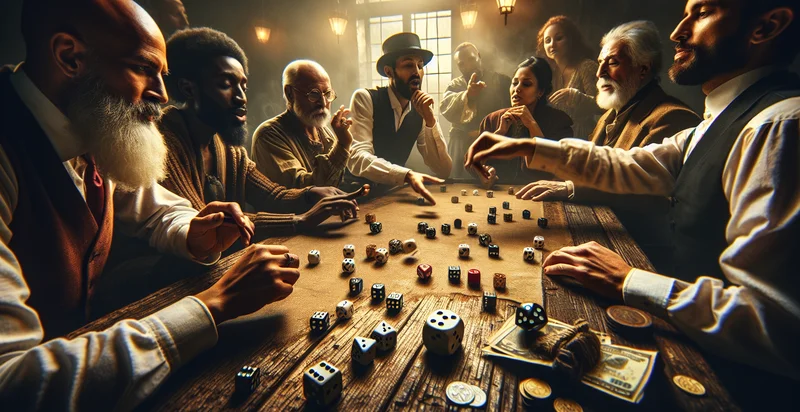Identify dice game type
using AI
Below is a free classifier to identify dice game type. Just upload your image, and our AI will predict what type of dice game it is - in just seconds.

Contact us for API access
Or, use Nyckel to build highly-accurate custom classifiers in just minutes. No PhD required.
Get started
import nyckel
credentials = nyckel.Credentials("YOUR_CLIENT_ID", "YOUR_CLIENT_SECRET")
nyckel.invoke("dice-game-type", "your_image_url", credentials)
fetch('https://www.nyckel.com/v1/functions/dice-game-type/invoke', {
method: 'POST',
headers: {
'Authorization': 'Bearer ' + 'YOUR_BEARER_TOKEN',
'Content-Type': 'application/json',
},
body: JSON.stringify(
{"data": "your_image_url"}
)
})
.then(response => response.json())
.then(data => console.log(data));
curl -X POST \
-H "Content-Type: application/json" \
-H "Authorization: Bearer YOUR_BEARER_TOKEN" \
-d '{"data": "your_image_url"}' \
https://www.nyckel.com/v1/functions/dice-game-type/invoke
How this classifier works
To start, upload your image. Our AI tool will then predict what type of dice game it is.
This pretrained image model uses a Nyckel-created dataset and has 25 labels, including Balderdash, Bingo Dice, Bunco, Catan Dice, Catan Dice Game, Chuck-A-Luck, Cosmic Craps, Craps, Dice 5000 and Dice City.
We'll also show a confidence score (the higher the number, the more confident the AI model is around what type of dice game it is).
Whether you're just curious or building dice game type detection into your application, we hope our classifier proves helpful.
Related Classifiers
Need to identify dice game type at scale?
Get API or Zapier access to this classifier for free. It's perfect for:
- Game Verification: This function can be utilized in online gaming platforms to ensure the integrity of dice games. By identifying whether images of dice rolls are genuine or manipulated, it helps to maintain fair play and user trust.
- E-commerce Quality Control: In the sale of board games or gaming accessories, the function can be employed to verify the authenticity of product images. This can prevent the listing of counterfeit items that misrepresent the actual game type.
- Educational Tools: This function can be integrated into educational software that teaches probability and game theory. By analyzing images of dice games, it can provide feedback on game mechanics and help students visualize concepts in real-time.
- Competitive Analysis: Game developers can use this function to analyze competitor products by assessing the similarities or differences in game types showcased in marketing materials. This idea can inform strategic decisions about game development and promotional tactics.
- Social Media Engagement: Businesses can implement this identifier in social media platforms to enhance user interactions. Users could upload images of their dice games, and the function would categorize or challenge them based on the game type, driving engagement and community discussions.
- Fraud Detection: Casinos and betting websites can implement this technology to detect fraudulent activities related to dice games. By classifying images accurately, it can flag suspicious gameplay and protect businesses from potential losses caused by cheating.
- Augmented Reality Experiences: Game developers can integrate this function into AR applications that enhance physical dice games. By recognizing the game type through camera input, the app can overlay digital features, such as tutorials or scorekeeping, thus enriching the user experience.


